Blog
Ronald Levin Carter (born May 4, 1937) is an American jazz double bassist. His appearances on 2,221 recording sessions make him the most-recorded jazz bassist in history.
Carter is also a cellist who has recorded numerous times on that instrument. Some of his studio albums as a leader include: Blues Farm (1973); All Blues (1973); Spanish Blue (1974); Anything Goes (1975); Yellow & Green (1976); Pastels (1976); Piccolo (1977); Third Plane (1977); Peg Leg(1978); and A Song for You (1978).
He was a member of the Miles Davis Quintet in the mid 1960s, which also included Herbie Hancock, Wayne Shorter and drummer Tony Williams. Carter joined Davis’s group in 1963, appearing on the album Seven Steps to Heaven and the follow-up E.S.P.. Carter also performed on some of Hancock, Williams and Shorter’s recordings during the sixties for Blue Note Records. He was a sideman on many Blue Note recordings of the era, playing with Sam Rivers, Freddie Hubbard, Duke Pearson, Lee Morgan, McCoy Tyner, Andrew Hill, Horace Silver and many others. He was elected to the Down Beat Jazz Hall of Fame in 2012. In 1993, he won a Grammy Award for Best Jazz Instrumental Group and another Grammy in 1998 for “an instrumental composition for the film” Round Midnight. In 2010 he was honored with France’s premier cultural award, the medallion and title of Commander of the Ordre des Arts et des Lettres.
https://www.youtube.com/watch?v=asJRAGUlZ1c
more...Donald Ernest Friedman (May 4, 1935 – June 30, 2016) was an American jazz pianist. He began playing in Los Angeles and moved to New York in 1958. In the 1960s, he played with both modern stylists and more traditional musicians.
Friedman was born on May 4, 1935, in San Francisco.Both of his parents were immigrants to the United States: his father, Edward Friedman, was from Lithuania, and his mother, Alma Loew, was from Germany. He began playing the piano at the age of four. He switched from classical music to jazz after his family moved to Los Angeles when he was fifteen. His early jazz piano influence was Bud Powell. Friedman briefly studied composition at Los Angeles City College.
On the West Coast, Friedman performed with Dexter Gordon, Chet Baker, Buddy DeFranco, and Ornette Coleman. He was also a member of Clark Terry‘s big band.
Friedman moved to New York permanently in 1958. In the 1960s, Friedman played with both modern jazz and more traditional or popular musicians. The former included Coleman, Eric Dolphy, Jimmy Giuffre, Booker Little, and Attila Zoller; the latter included Bobby Hackett and Herbie Mann. Frieman’s first album as a leader was A Day in the City, in 1961.
more...Walter Maynard Ferguson CM (May 4, 1928 – August 23, 2006) was a Canadian jazz trumpeter and bandleader. He came to prominence in Stan Kenton‘s orchestra before forming his own big band in 1957. He was noted for his bands, which often served as stepping stones for up-and-coming talent, his versatility on several instruments, and his ability to play in a high register.
Ferguson was born in Verdun (now part of Montreal), Quebec. Encouraged by his mother and father (both musicians), he started playing piano and violin at the age of four. At nine years old, he heard a cornet for the first time in his local church and asked his parents to buy one for him. When he was thirteen, he soloed with the Canadian Broadcasting Corporation Orchestra. He was heard frequently on the CBC, notably featured on a “Serenade for Trumpet in Jazz” written for him by Morris Davis. He won a scholarship to the Conservatoire de musique du Québec à Montréal where he studied from 1943 to 1948 with Bernard Baker.
more...Umm Kulthum (Arabic: أم كلثوم, Egyptian Arabic pronunciation: [ʊm kʊlˈsuːm]; French: Oum Kalthoum; born Fāṭima ʾIbrāhīm es-Sayyid el-Beltāǧī فاطمة إبراهيم السيد البلتاجي on 31 December 1898, or 4 May 1904; died 3 February 1975) was an Egyptian singer, songwriter, and film actress active from the 1920s to the 1970s. She was given the honorific title Kawkab al-Sharq (كوكب الشرق, “Star of the East”).
Umm Kulthum was known for her vocal ability and unique style. She sold over 80 million records worldwide, making her one of the best-selling Middle Eastern singers of all time. She is considered a national icon in her native Egypt; she has been dubbed “The voice of Egypt” and “Egypt’s fourth pyramid”.
Umm Kulthum was born in the village of Tamay e-Zahayra, belonging to the city of Senbellawein, Dakahlia Governorate, in the Nile Delta. Her birth date is unconfirmed, as birth registration was not enforced throughout Egypt at that time. Some sources claim that she was born either on 31 December 1898; 31 December 1904; or 4 May 1904. She learned how to sing by listening to her father teach her older brother, Khalid. From a young age she showed exceptional singing talent. Her father, an imam at the local mosque, taught her to recite the Qur’an, and she is said to have memorized the entire book. When she was 12 years old, her father noticed her strength in singing so he asked her to join the family ensemble. She dressed as a boy for her father to not face disapprobation due to having a girl on stage. At the age of 16, she was noticed by Mohamed Abo Al-Ela, a modestly famous singer, who taught her the old classical Arabic repertoire. A few years later, she met the famous composer and oudist Zakariyya Ahmad, who invited her to come to Cairo.
https://www.youtube.com/watch?v=R4z3bxEUICg
more...WEAR YOUR MASK
GLOVES AND GLASSES
When necessary!
PEOPLE ARE DYING, BE RESPONSIBLE, SAVE LIVES
Too many people in Minnesota are being reckless and careless by not wearing masks!

Today at this time I would usually be in Powder Horn Park storing music gear for my bands that would perform about 5-6pm while drinking coffee from the Mayday Cafe. I would also be setting up for the 330pm Ceremony extravaganza next to the lake on the west side of the park. With the giant puppets the Sun, The Woods, The Prairie, The Sky and the River. Next checking in with my van in the parking lot then scurry off to the Parade Site at 25th & Bloomington with snare & harness on hand readying for the noon start of the Parade with Your Community Band. However this is the year of COVID-19 so this event will not happen in its splendid, glorious, spectacle of our Community Gathering Celebrating Our World in commonality and struggle against the odds of Politics, Pollution, Inequality, Racism and all the challenges that bring us together in unity to declare our love of Humanity, Mother Earth and the Beauty of Our Living Beings. This morning there are over 6,000 cases of the virus and almost 400 deaths. So Stay at Home and when your out and about wear a mask and gloves when necessary.
We will celebrate another day in another very changed and altered World.

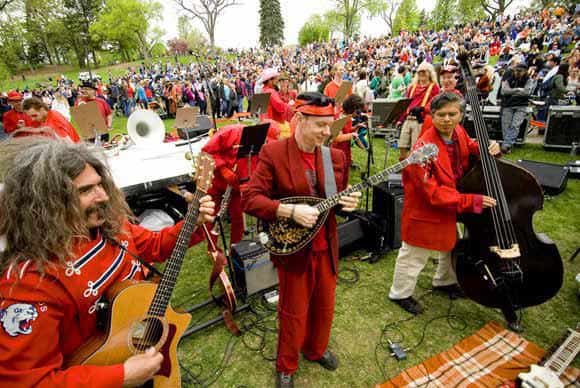
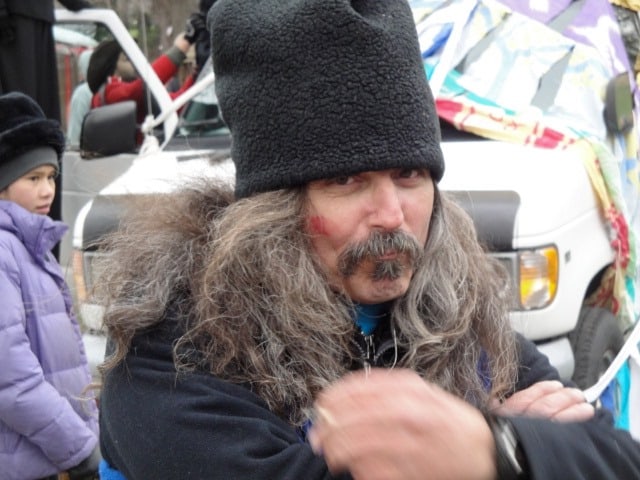

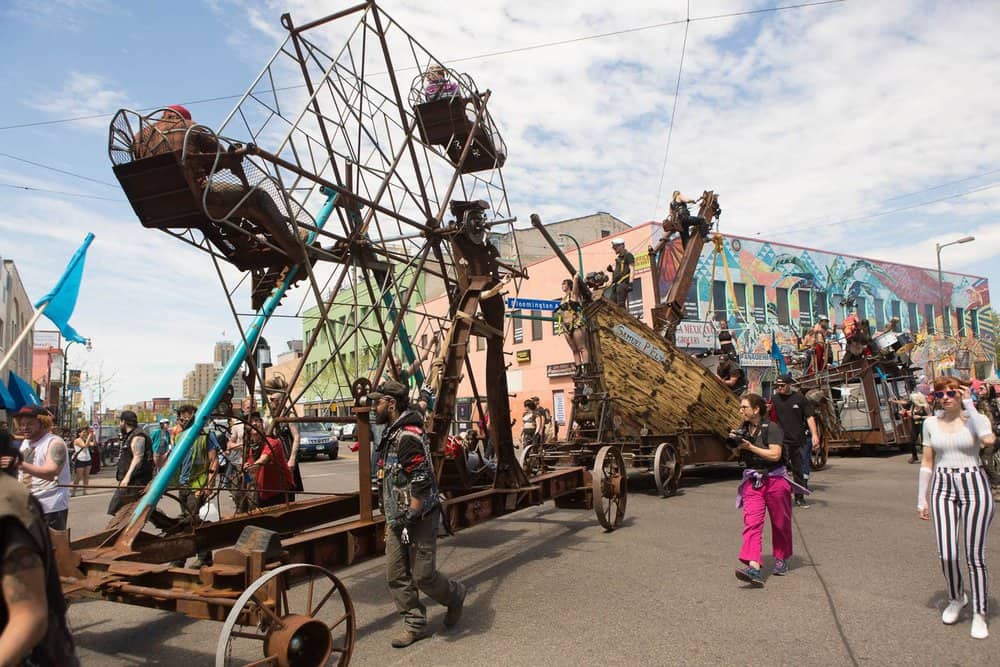
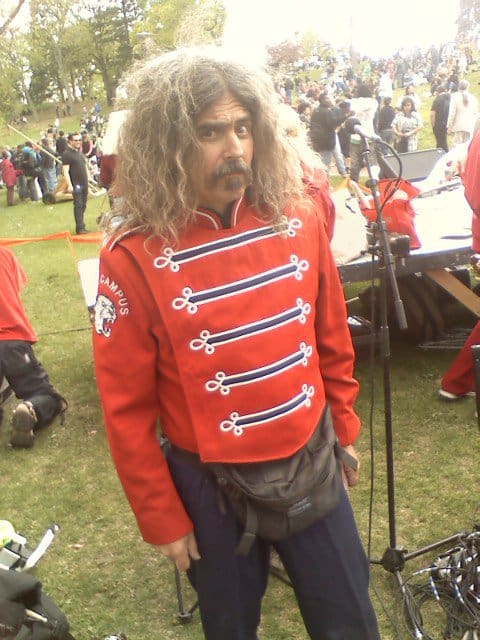


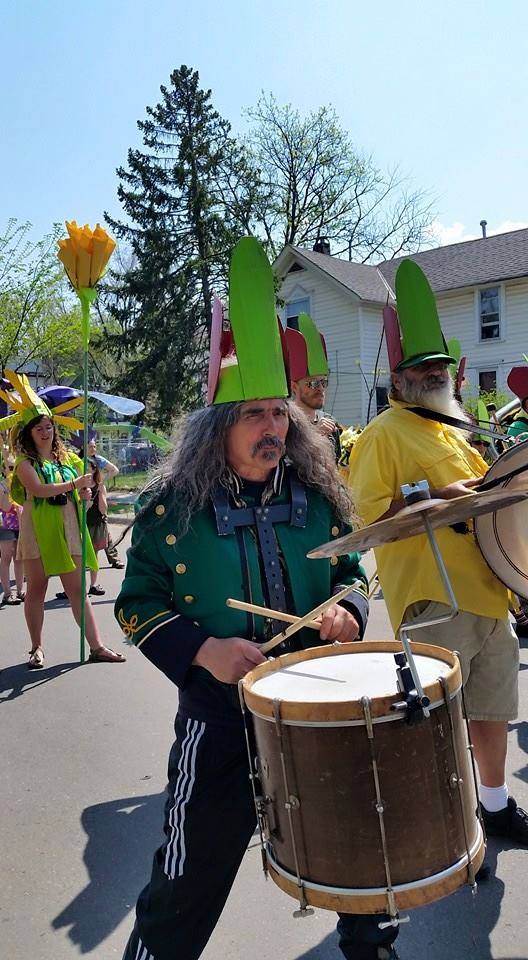
The Crab Nebula (catalogue designations M1, NGC 1952, Taurus A) is a supernova remnant in the constellation of Taurus. The current name was caused by William Parsons, 3rd Earl of Rosse, observing the object in 1840 using a 36-inch telescope and produced a drawing that looked somewhat like a crab. Corresponding to a bright supernova recorded by Chinese astronomers in 1054, the nebula was observed later by English astronomer John Bevis in 1731. The nebula was the first astronomical object identified with a historical supernova explosion.
At an apparent magnitude of 8.4, comparable to that of Saturn’s moon Titan, it is not visible to the naked eye but can be made out using binocularsunder favourable conditions. The nebula lies in the Perseus Arm of the Milky Way galaxy, at a distance of about 2.0 kiloparsecs (6,500 ly) from Earth. It has a diameter of 3.4 parsecs (11 ly), corresponding to an apparent diameter of some 7 arcminutes, and is expanding at a rate of about 1,500 kilometres per second (930 mi/s), or 0.5% of the speed of light.
Pulsars are dead stars that spin remarkably steadily – they are some of the most regularly ticking clocks in the Universe! However, every few years some pulsars ‘glitch’, and speed up a tiny amount almost instantaneously. Understanding what causes these glitches may unveil what’s really happening inside these super-dense dead stars.
Detailed theoretical and computer models are hard to connect to real observations, so instead PhD student Julian Carlin and Chief Investigator Andrew Melatos, from the ARC Centre of Excellence for Gravitational Wave Discovery (OzGrav), built a ‘meta-model’ in a paper recently published in the Monthly Notices of the Royal Astronomical Society.
The meta-model relies on the idea that ‘stress’ builds up inside the pulsar until it reaches a threshold, and then some of this stress is released as a glitch. The interesting thing about this meta-model is that the stress increases by taking a ‘random walk’ upwards: like an intoxicated person returning home from the pub who might take two steps forward, one step back, then three steps forward. The randomness in how the stress builds is supported by some theoretical models, as well as a recent study of a glitch-in-action led by OzGrav researchers Greg Ashton, Paul Lasky, and others.
Meta-models make predictions about what we should see in the long term from glitching pulsars.
‘This meta-model predicts that there should always be a correlation between big glitches and the time until the next glitch: if a lot of stress is released, it takes longer on average for the pulsar to build up enough stress for another glitch,’ explains Carlin.
Using this prediction, Carlin and Melatos tried to falsify the meta-model, asking the question: ‘Are there long-term observations that can’t be explained?’ The answer depends on the pulsar. Some are well-explained by the meta-model, while others don’t quite match the predictions.

James Joseph Brown (May 3, 1933 – December 25, 2006) was an American singer, songwriter, dancer, musician, record producer and bandleader. A progenitor of funk music and a major figure of 20th century music and dance, he is often referred to as the “Godfather of Soul” and “Soul Brother No. 1“. In a career that lasted over 50 years, he influenced the development of several music genres.
Brown began his career as a gospel singer in Toccoa, Georgia. He joined a rhythm and blues vocal group, the Gospel Starlighters (which later evolved into the Famous Flames) founded by Bobby Byrd, in which he was the lead singer. First coming to national public attention in the late 1950s as a member of the singing group The Famous Flames with the hit ballads “Please, Please, Please” and “Try Me“, Brown built a reputation as a tireless live performer with the Famous Flames and his backing band, sometimes known as the James Brown Band or the James Brown Orchestra. His success peaked in the 1960s with the live album Live at the Apollo and hit singles such as “Papa’s Got a Brand New Bag“, “I Got You (I Feel Good)” and “It’s a Man’s Man’s Man’s World“.
During the late 1960s, Brown moved from a continuum of blues and gospel-based forms and styles to a profoundly “Africanized” approach to music-making that influenced the development of funk music. By the early 1970s, Brown had fully established the funk sound after the formation of the J.B.s with records such as “Get Up (I Feel Like Being a) Sex Machine” and “The Payback“. He also became noted for songs of social commentary, including the 1968 hit “Say It Loud – I’m Black and I’m Proud“. Brown continued to perform and record until his death from pneumonia in 2006.
Brown recorded 17 singles that reached No. 1 on the Billboard R&B charts. He also holds the record for the most singles listed on the BillboardHot 100 chart which did not reach No. 1.Brown was inducted into 1st class of the Rhythm & Blues Music Hall of Fame in 2013 as an artist and then in 2017 as a songwriter. He also received honors from many other institutions, including inductions into the Rock and Roll Hall of Fame and Songwriters Hall of Fame. In Joel Whitburn‘s analysis of the Billboard R&B charts from 1942 to 2010, Brown is ranked No. 1 in The Top 500 Artists. He is ranked No. 7 on Rolling Stone‘s list of its 100 Greatest Artists of All Time. Rolling Stone has also cited Brown as the most sampledartist of all time. Brown was born on May 3, 1933, in Barnwell, South Carolina, to 16-year-old Susie (née Behling; 1917–2003), and 22-year-old Joseph Gardner Brown (1911–1993), in a small wooden shack.
James Milton Cleveland (May 3, 1926 – August 23, 2008) was an American jazz trombonist born in Wartrace, Tennessee.
Cleveland worked with many other jazz musicians, including Lionel Hampton, Miles Davis, Sarah Vaughan, Antonio Carlos Jobim, Quincy Jones, Lucky Thompson, Gigi Gryce, Oscar Peterson, Oscar Pettiford and James Brown. He also recorded a sequence of albums for EmArcy/Mercury Records in the 1950s. He continued to make records with Zion Records later in his career.
Cleveland died August 23, 2008 in Lynwood, California at age 82.
https://www.youtube.com/watch?v=YT17H7e8GZA
more...Peter Seeger (May 3, 1919 – January 27, 2014) was an American folk singer and social activist.
A fixture on nationwide radio in the 1940s, Seeger also had a string of hit records during the early 1950s as a member of the Weavers, most notably their recording of Lead Belly‘s “Goodnight, Irene“, which topped the charts for 13 weeks in 1950. Members of the Weavers were blacklisted during the McCarthy Era. In the 1960s, Seeger re-emerged on the public scene as a prominent singer of protest music in support of international disarmament, civil rights, counterculture, and environmental causes.
A prolific songwriter, his best-known songs include “Where Have All the Flowers Gone?” (with Joe Hickerson), “If I Had a Hammer (The Hammer Song)” (with Lee Hays of the Weavers), and “Turn! Turn! Turn!“, which have been recorded by many artists both in and outside the folk revival movement. “Flowers” was a hit recording for the Kingston Trio (1962); Marlene Dietrich, who recorded it in English, German and French (1962); and Johnny Rivers (1965). “If I Had a Hammer” was a hit for Peter, Paul and Mary (1962) and Trini Lopez (1963) while the Byrds had a number one hit with “Turn! Turn! Turn!” in 1965.
Seeger was one of the folk singers responsible for popularizing the spiritual “We Shall Overcome” (also recorded by Joan Baez and many other singer-activists) that became the acknowledged anthem of the Civil Rights Movement, soon after folk singer and activist Guy Carawan introduced it at the founding meeting of the Student Nonviolent Coordinating Committee (SNCC) in 1960. In the PBS American Masters episode “Pete Seeger: The Power of Song“, Seeger said it was he who changed the lyric from the traditional “We will overcome” to the more singable “We shall overcome”.
Seeger was born on May 3, 1919, at the French Hospital, Midtown Manhattan. His family, which Seeger called “enormously Christian, in the Puritan, Calvinist New England tradition”, traced its genealogy back over 200 years. A paternal ancestor, Karl Ludwig Seeger, a doctor from Württemberg, Germany, had emigrated to America during the American Revolution and married into the old New England family of Parsons in the 1780s.
more...John Aaron Lewis (May 3, 1920 – March 29, 2001) was an American jazz pianist, composer and arranger, best known as the founder and musical director of the Modern Jazz Quartet.
John Lewis was born in La Grange, Illinois, and after his parents’ divorce moved with his mother, a trained singer, to Albuquerque, New Mexico when he was two months old. She died from peritonitis when he was four and he was raised by his grandmother and great-grandmother. He began learning classical music and piano at the age of seven. His family was musical and had a family band that allowed him to play frequently and he also played in a Boy Scout music group. Even though he learned piano by playing the classics, he was exposed to jazz from an early age because his aunt loved to dance and he would listen to the music she played. He attended the University of New Mexico, where he led a small dance band that he formed and double majored in Anthropology and Music. His piano teacher at the university was Walter Keller, to whom he paid tribute on the title composition of the Modern Jazz Quartet’s 1974 album In Memoriam.
more...IC 1396 is a region of emission, reflection, and dark nebulosity some 2,400 light-years away in the constellation Cepheus the King. This cloud contains the famous Elephant Trunk, which snakes up from the bottom of the object.
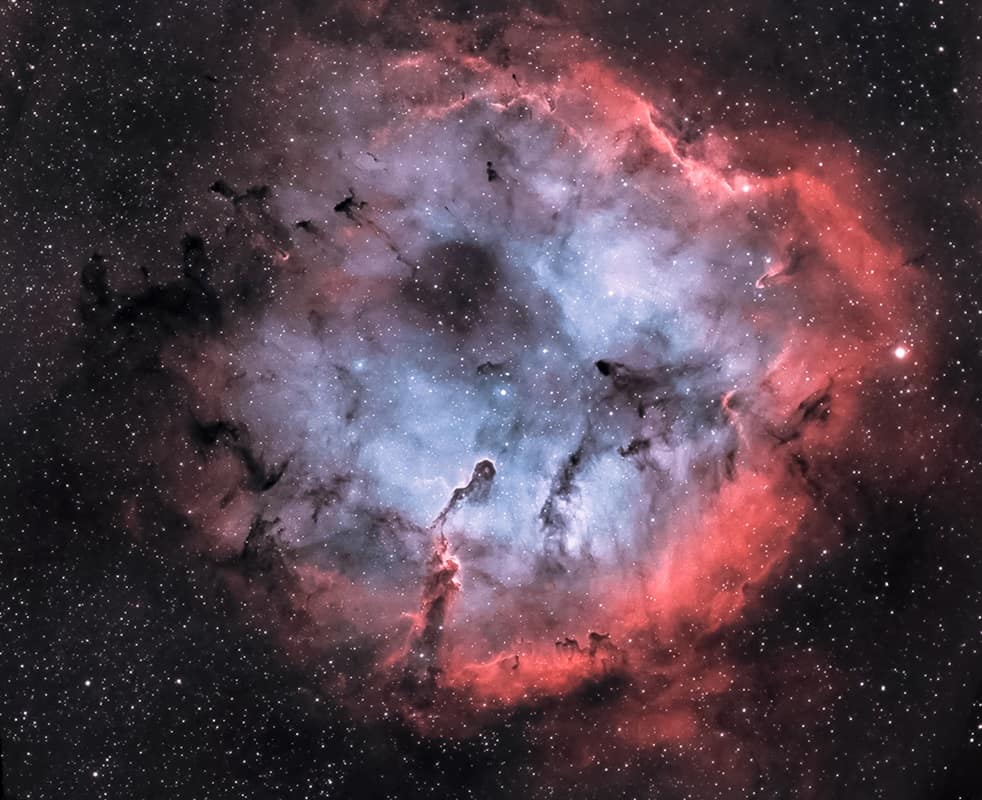
Alexander Minto Hughes (2 May 1945 – 13 March 1998), better known as Judge Dread, was an English reggae and ska musician. He was the first white recording artist to have a reggae hit in Jamaica, and the BBC has banned more of his songs than those of any other recording artist, because of his frequent use of sexual innuendo and double entendres. Following his death, Rolling Stone reported, “He sold several million albums throughout his 25-plus year career and was second only to Bob Marley in U.K. reggae sales during the 1970s”.
Hughes was born on 2 May 1945, six days before the end of the Second World War in Europe. He was introduced to Jamaican music when he lodged as a teenager in a West Indian household in Brixton, South West London. Hughes, a heavy set man, met Jamaican artists Derrick Morgan and Prince Buster through his job as a bouncer at London nightclubs such as the Ram Jam in Brixton, and through another job as a bodyguard. After working as a professional wrestler (under the name “The Masked Executioner”) and as a debt collector for Trojan Records, he worked as a DJ on local radio. In the 1960s he was also sometimes employed to provide security to The Rolling Stones.
When Prince Buster had a big underground hit in 1969 with “Big 5”, Hughes capitalized on it with the recording of his own “Big Six“, based on Verne & Son’s “Little Boy Blue”, which was picked up by Trojan boss Lee Gopthal, and released on Trojan’s ‘Big Shot’ record label under the stage name Judge Dread, the name taken from another of Prince Buster’s songs. According to UK newspaper The Independent, this came about after he played the track to Trojan Records’ production team in 1972: one of the team, Joe Sinclair, later recalled: “When Dread brought in his demo, we didn’t exactly think it was a national hit but we reckoned we could pick up something around the region of 70,000 sales with the help of a change of title. You see, the Judge called it ‘Little Boy Blue’, whereas I thought ‘Big Six’ would create interest by making the association with Prince Buster’s ‘Big Five’ more obvious. It sold 300,000 copies and spent 27 weeks in the British charts. In 1973, it even made No 1 in Africa.” “Big Six” reached No. 11 in the UK Singles Chart in 1972, selling over 300,000 copies and spending six months on the chart, despite getting no radio airplaydue to its lyrics. Further hit singles followed with “Big Seven” (co-written by Rupie Edwards) and “Big Eight” – both following the pattern of lewd versions of nursery rhymes over a reggae backing – as well as “Y Viva Suspenders” and “Up with the Cock”.
more...Mickey Bass (born May 2, 1943 in Pittsburgh, Pennsylvania) is an American bassist, composer, arranger, and music educator. He was born Lee Odiss Bass III. He has played with Chico Freeman, John Hicks, and Kiane Zawadi.
Mickey Bass is a Pittsburgh bassist who has worked with hard bop bandleaders and combos since the ’60s; he has not recorded often as a leader. His maternal grandmother who performed in minstrel shows taught him and his cousins Barbershop music. He has played and recorded with Sonny Rollins, Bennie Green, and Charles Mingus. The New York Times declared: “When Mickey Bass and the Co-operation get in the right groove…it is doubtful if there is another jazz group in town that swings as hard as this one.”[1]
He has taught students at Duke Ellington School of the Arts and Hartt College of Music from 1975 to 1985. His students at Ellington included Wallace Roney, Gregory Charles Royal, Clarence Seay, and drummer Eric Allen. In 1980, he was given a National Endowment for the Arts Composers’ Grant.
more...More Posts
- World Music with Terez Sliman
- Daily Roots with Black Thunder
- Music for Surviving the Pandemic
- The Cosmos with IC 2177
- Steve Khan Day
- Mickey Tucker Day
- John Tchicai Day
- Mario Bauza Day
- World Music with La Gallera Social Club
- Daily Roots with Pablo Gad
- Music for Surviving the Pandemic
- The Cosmos with NGC 936
- Jim Keltner Day
- Freddie Waits Day
- Connie Kay Day
- World Music with Sauljaljui
- Daily Roots with Daniel Asher
- Music for Surviving the Pandemic
- The Cosmos with Herbig Haro 901/902
- Lakshminarayana Shankar Day